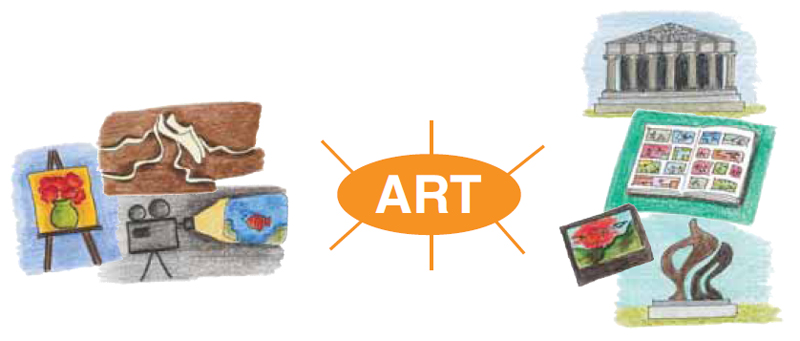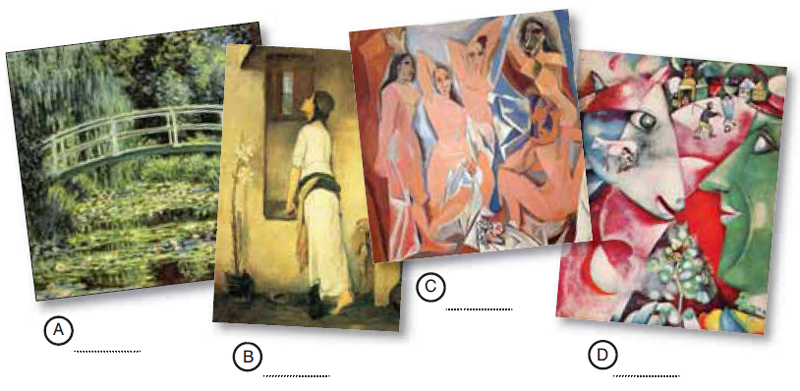UNIT 5
ΤΗΕ ARTS!
Read what some famous people said about different forms of art. Discuss in class.
A flag in celebration of the arts
used to promote an Annual High School Art Show in the spring of 2008
|
LESSON 13 • QUITE AN ART!

UNIT 5
|
|||||||||||||||||||||
LESSON 13 • QUITE AN ART!
UNIT 5
|
LESSON 13 • QUITE AN ART!
The Passive voice in the Simple Present tense is formed with:
subject + …………………… + ……………………
Can you match the examples above with an appropriate use from the box?
and your teacher has asked you to call and get some information about it. Look at the notes you took over the phone and inform your class about the regulations of the art centre.
UNIT 5
|
LESSON 13 • QUITE AN ART!
 UNIT 5
|
LESSON 13 • QUITE AN ART!
a. Seated Man
b. Historia c. The Children’s Concert d. Athenian balcony e. Sailor f. The Straw hat g. Two friends
UNIT 5
|